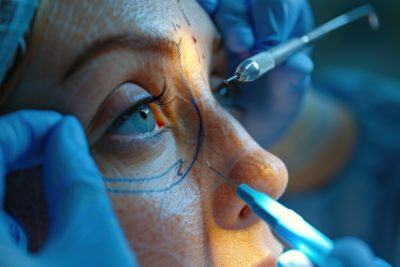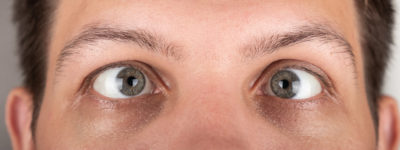Arjun, a 10-year-old boy, has the most notorious yet enchanting eyes. Like all the other kids, Arjun also has spent the entire Covid-19 period glancing at his parents’ smartphone screen, playing games and taking classes. However, when he finally went back to school, Arjun found out that even after putting excessive strain on his little eyes, he could not clearly see whatever was written on the board.
When he returned home with a severe headache and told this story to his mother, she immediately made an appointment with us for the next day. After a short fun chat with little Arjun, we discovered that he was suffering from myopia, also known as Short sightedness or Nearsightedness. However, in order to be sure about his condition, it was important to conduct some tests.

We went on to explain to his mother about myopia and its treatment options while Arjun was engrossed in making friends with other children. As her mother observantly listened, we told her that mild myopia is a common medical condition that affects a significant population of people under the age of 40 and it can be easily treated with eyeglasses and contact lenses.
However, there majorly two types of myopia:
-
High Myopia
It is a case where an individual’s eyeball grows too long, or their cornea becomes too steep. A case of myopia is defined as high myopia when the refractive error goes higher than –6. This can progress even further if not treated in time. High myopia correction can also be done through eyeglasses or contact lenses. In some cases, refractive surgery can also be suggested, depending on the severity.
-
Degenerative Myopia
Degenerative myopia is a rare but severe case that occurs during early childhood. This type of myopia causes complete damage to the retina (the light-sensitive area), which can ultimately lead to legal blindness. The conversation went further as we started talking about the factors that are responsible for causing myopia.
What Causes Myopia?
Either genetic or external factors can cause myopia. Moreover, it could also occur due to the blend of both hereditary and environmental aspects. In fact, this is what happened in Arjun’s case. His father has been suffering from myopia since he was 16 years old, and Arjun has consistently used smartphones and tablets for long hours since he was little. These two factors together caused him to become myopic.
If explained scientifically, the eyeballs of myopic people are longer in length, which leads their cornea (the protecting outer layer) to be more curved than usual. Due to this, the light that enters the eyes would fall in front of the retina instead of directly falling onto it. This eventually causes blurred vision.
While we were proceeding to list down the symptoms to his mother, Arjun’s curious little brain pulled him towards our conversation, and he nodded at every symptom that he was experiencing. To make it comprehensible, we have mentioned the major symptoms of myopia.
Symptoms of Myopia
-
Blurry vision when looking at faraway objects
-
Headaches
-
Eye strain or eye fatigue
-
Squinting
Arjun’s mother seemed a little scared and hesitant to listen to all this. However, with our years of experience dealing with such cases, we assured her that the myopia treatment procedure is not only possible but is also extremely easy. We gave her comprehensive knowledge about the different treatment options that are available for myopia.
Available Treatment Options for Myopia
-
Eyeglasses
Wearing eyeglasses is the most common method of myopia correction. The refractive error that causes myopia can be corrected by wearing eyeglasses. It is an effective solution wherein your child will get prescribed lenses once he undergoes a diagnostic eye assessment.
-
Contact Lenses
The same type of eye assessment is needed for contact lenses as well. Like eyeglasses, they also tend to alter the direction of the light. However, contact lenses are thinner if compared to eyeglasses as they sit closer to the cornea.
-
Corrective Eye Surgery
Although, eyeglasses and contact lenses provide comfort to your eyes when worn. These two options do not give a long-term permanent solution. The only permanent method of myopia correction is refractive surgery. Using a laser beam, your cornea is reshaped to correct your vision. The three kinds of refractive surgeries are LASIK, LASEK, and PRK.
Get Unmatched Treatments with Dr Agarwals Eye Hospital
With a team of 400 highly experienced doctors backing your treatments, Dr Agarwals Eye Hospital aims to substantiate personalized care and attention to their patients. Our hospital uses only advanced technological methods to provide treatments for various eye-related problems like diabetic retinopathy, glaucoma, cataracts, Retinal Detachment, etc.
Say yes to flawless eyes with innovation, experience, and exceptionally smooth services. Please explore our website to know more.









